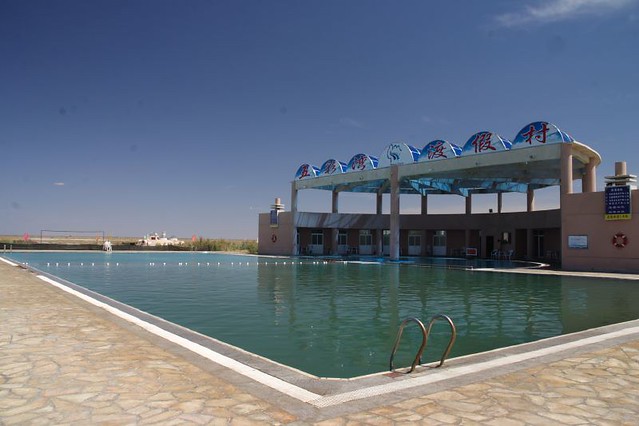Nepal possess many, many hot springs. So many, that most are still unknown, let alone out there on the internet.
Some of the best sources as of November 2011 are:
- 'Getting into Hot Water' on colorfulnepal.com. It mentions roughly a dozen hot springs, mostly the more well known.
- Visitnepal.com mentions
'more than 50 hot springs exist in Nepal'
and lists about a dozen hot springs. the list is most probably a copy of the list included in 'Geology for Technical Students' by Rajan Kumar Dahal, a course publication for nepali students. Unfortunately only two pages are dedicated to hot springs and not much real information is provided.
- ECS Nepal has a feature on hot springs in Nepal. Entitled 'Tectonic Gifts Hot Springs of the Himalaya', authored by P. Kauba, it's of March earlier this year and gives an enthusiastic call for all readers to soak.
- Ranjit (2000) is one of the few true scientific overviews. It mentions 28 hot springs with more characteristics on nearly 20 of these.
- With quite a bit of info on hot spring, the e-book 'Water and Culture' by Shaphalya (2003) provides some great points on hot spring culture in Nepal.
There is other printed material available, I know. Before the so-called Maoist revolt there were a number of tourist magazines and I know that there were various articles focusing on lesser well-known hot springs, but Nepal is not really wired and especially back then.

From the Himalayan Times 3 April 2011 a photo by Krishnamani Baral:
'Local women taking a dip in the hot springs at Tatopani Kunda in SardiKhola‚ Kaski on Sunday‚ April 3‚ 2011. The hot springs are believed to have a healing effect on ailments including constipation‚ joint pains and skin diseases'.
Eastern Nepal
Not many hot springs are known in eastern Nepal. Safe to say there are none near the Everest. However both references above mention Hotiyana (or Hatiya?), Sankhuwasaba district, but nothing more is known.
Then there is the mention of a hot spring at the start of the Nepal/India border river the Mechi:
'"Mechi is said to come from Min Chu Ung Kyong, meaning either "big river," or "hot spring." The name hot spring might sound unlikely, but in Antu, where Mechi starts, it is said that a long time ago people would indeed come to enjoy the hotspring, not only for pleasure but also for curing. The river forms border between Nepal and India and has played an important role in the history of Ilam." '
But that's about all for eastern Nepal. Look at the sidebar for more info on Nepal's hot springs.
Notes:
Ranjit, M. (2000) Geothermal energy update of Nepal. Proceedings World Geothermal Congress 2000. pp. 387-395. International Geothermal Association, Bochum, Germany.
Shiphalya, A (2003) Water & Culture. Jalasrot Vikas Sanrot, Kathmandu, Nepal.
